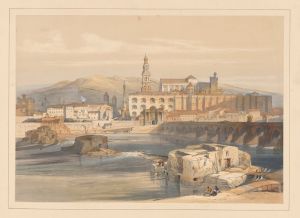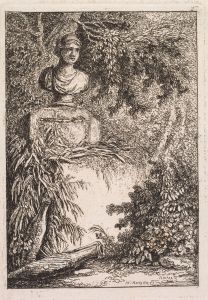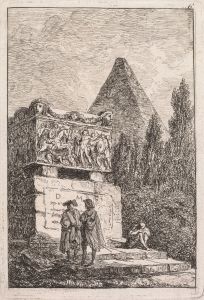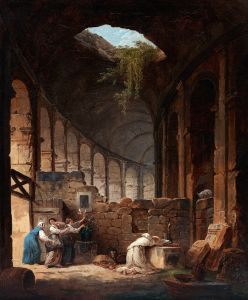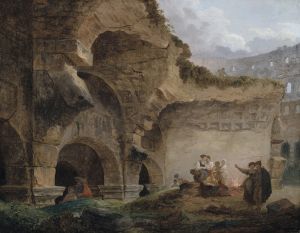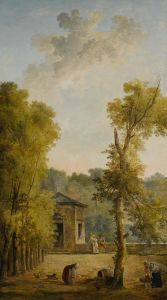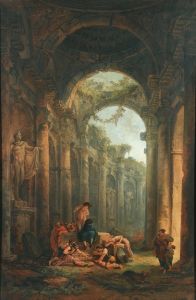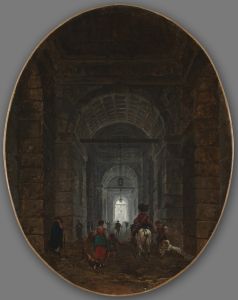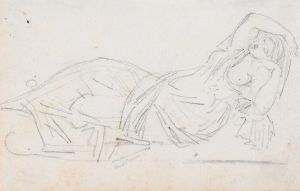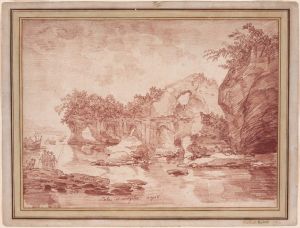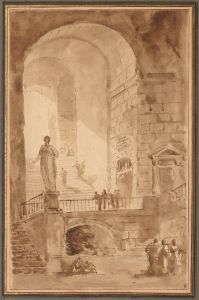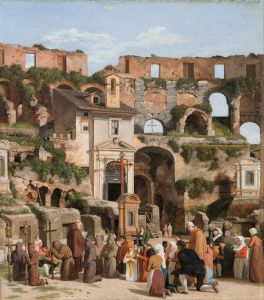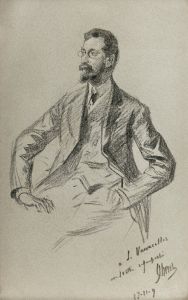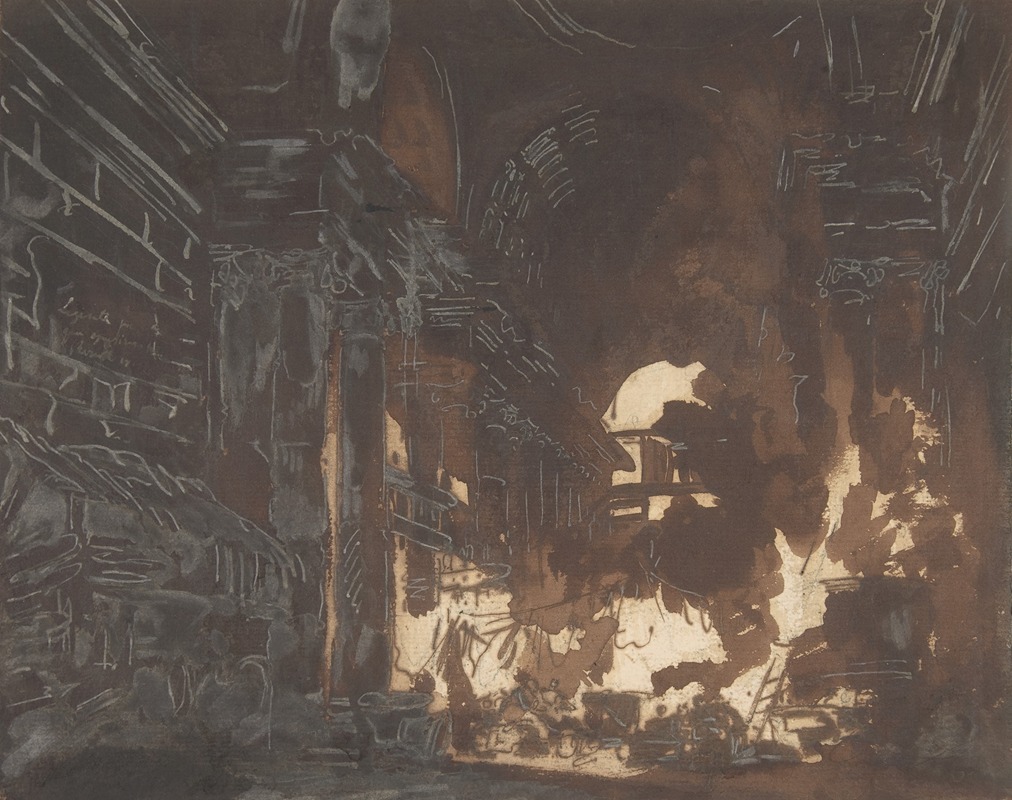
Washerwomen in a Ruined Gallery
A hand-painted replica of Hubert Robert’s masterpiece Washerwomen in a Ruined Gallery, meticulously crafted by professional artists to capture the true essence of the original. Each piece is created with museum-quality canvas and rare mineral pigments, carefully painted by experienced artists with delicate brushstrokes and rich, layered colors to perfectly recreate the texture of the original artwork. Unlike machine-printed reproductions, this hand-painted version brings the painting to life, infused with the artist’s emotions and skill in every stroke. Whether for personal collection or home decoration, it instantly elevates the artistic atmosphere of any space.
"Washerwomen in a Ruined Gallery" is a painting by the French artist Hubert Robert, known for his expertise in depicting architectural ruins and landscapes. Hubert Robert (1733–1808) was a prominent painter during the 18th century and a member of the French Royal Academy of Painting and Sculpture. He earned the nickname "Robert des Ruines" (Robert of the Ruins) due to his frequent use of ancient ruins as a central theme in his works.
This painting exemplifies Robert's fascination with the juxtaposition of human activity and decayed architecture. It portrays a group of washerwomen engaged in their daily chores within the setting of a grand, ruined gallery. The architectural elements in the scene, such as crumbling columns, arches, and fragments of classical design, reflect Robert's interest in the remnants of antiquity. These ruins are not based on a specific historical site but are rather imaginative compositions inspired by his studies of Roman and other ancient architecture during his time in Italy.
The washerwomen, depicted in the foreground, provide a sense of scale and human presence, contrasting the monumental and decayed structures around them. This contrast between the mundane activities of everyday life and the grandeur of the past is a recurring theme in Robert's work, emphasizing the passage of time and the transient nature of human endeavors.
Robert's artistic style combines elements of realism and romanticism. His use of light and shadow creates a dramatic atmosphere, while his attention to detail in the architectural features lends a sense of authenticity to the imagined scene. The painting also reflects the 18th-century European fascination with ruins, which were often seen as symbols of the sublime and the inevitability of decay.
The exact date of creation for "Washerwomen in a Ruined Gallery" is not definitively documented, but it is consistent with Robert's body of work from the late 18th century. The painting is part of his broader exploration of themes related to ruins, human activity, and the interplay between nature and architecture.
As of now, the painting is held in a private collection or museum, though specific details about its current location or provenance are not widely available.





